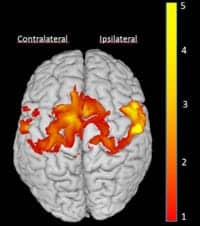
Chelsey Sterling, MA, first study author, graduate student, medical psychology, adds that researchers observed, “increases in grey matter volume in the sensorimotor cortices on both sides of the brain and in the hippocampus. These increases were accompanied by large improvements in spontaneous arm use in the home environment…” Sterling also notes increases in grey matter correlated with improvement in motor activity may raise the possibility of a casual relationship between the two.
A university news release reports that during the study, the children underwent intensive motor training for 3 hours each weekday for a 3-week period, with the less-affected arm being continuously restrained in a long arm cast. In the release, Edward Taub, PhD, reported developer of CI therapy and a study co-author, explains that that therapy has also been shown to be effective in improving the rehabilitation of movement following stroke and other neurological injuries in both children and adults.
“The motor improvement and changes in grey matter following CI therapy observed in this study are similar to those observed previously in adults. It is further evidence that the brain has a remarkable capacity to heal itself when presented with an efficacious rehabilitation intervention such as CI therapy,” Taub adds.
The study appears online in Pediatrics.
Photo Credit: Pediatrics
Source: UAB


